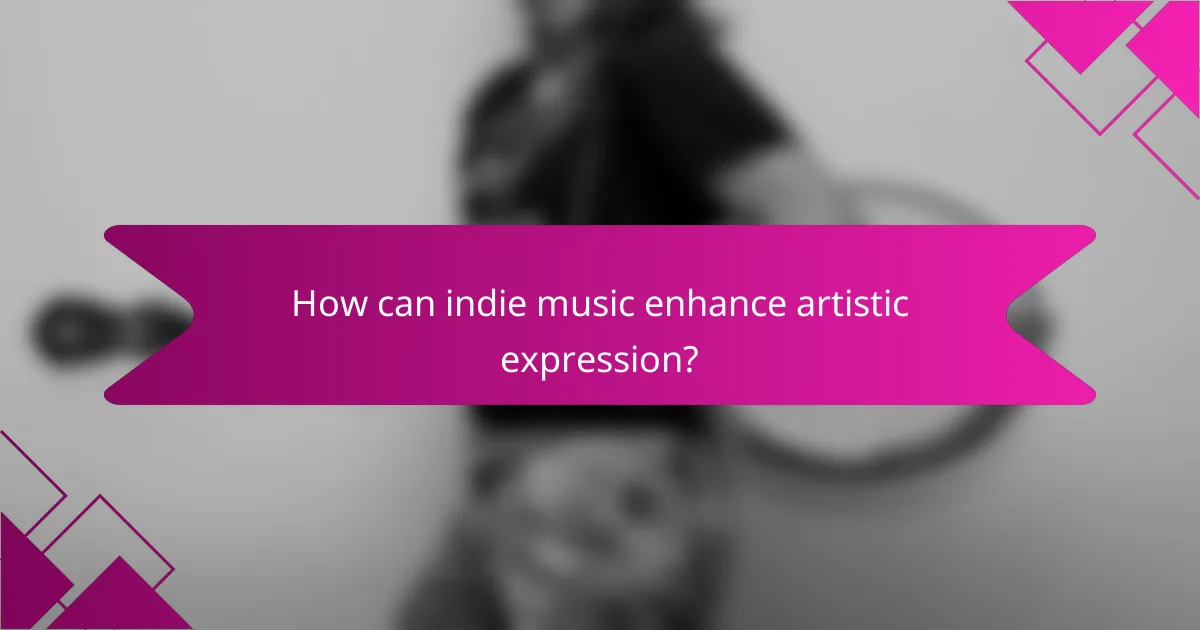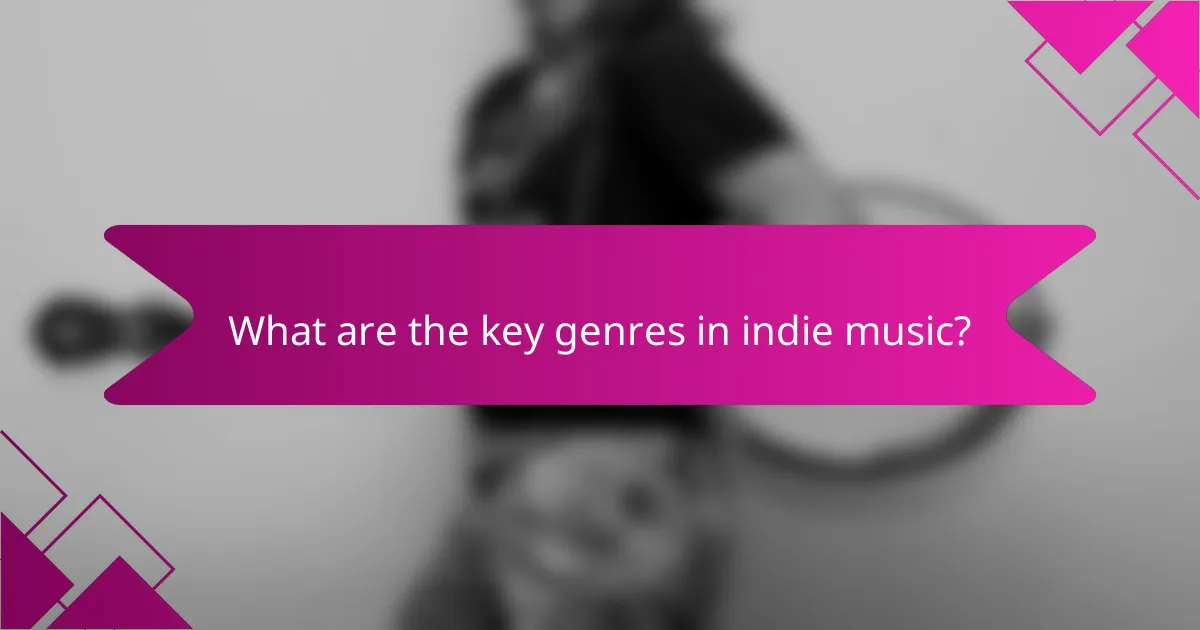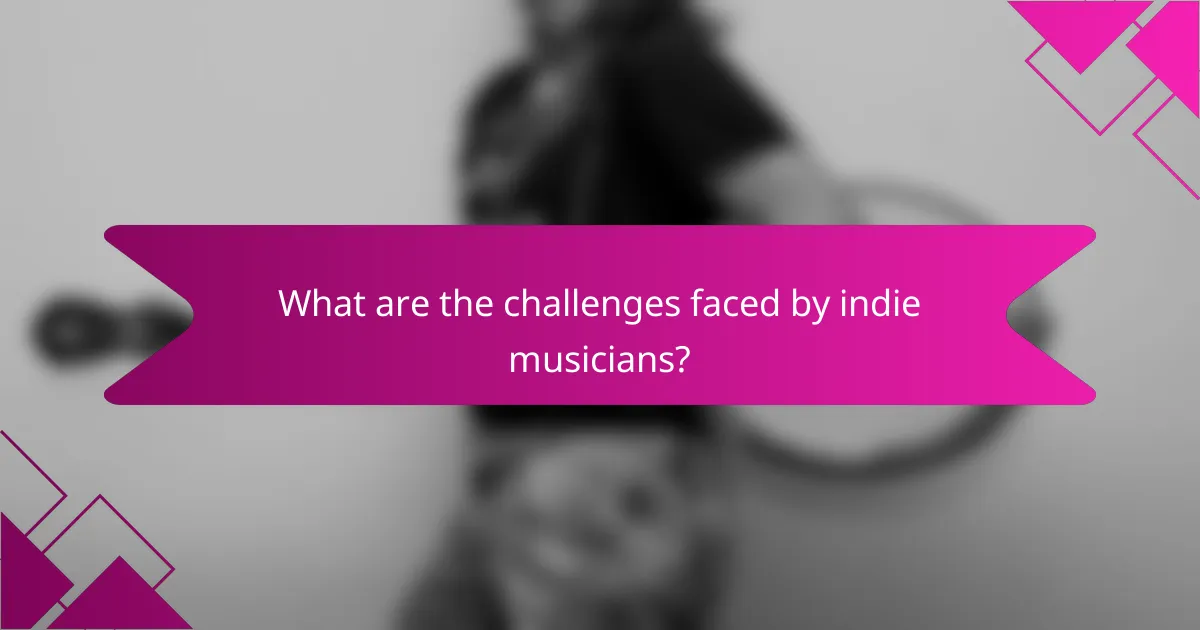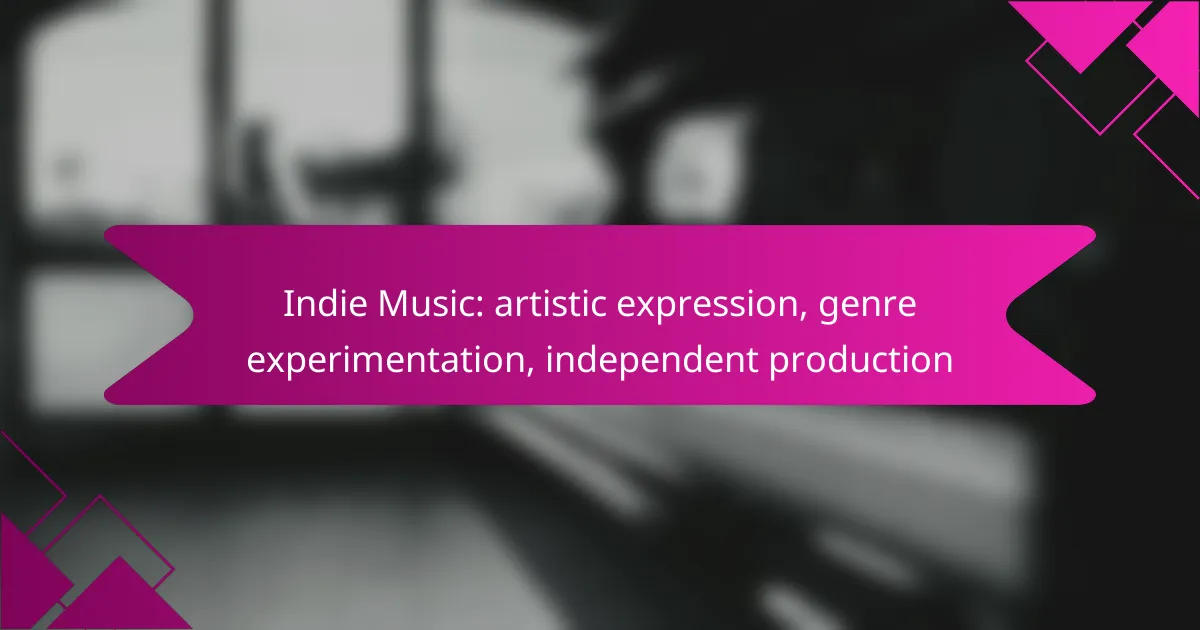Indie music serves as a vibrant platform for artistic expression, enabling artists to explore a wide array of sounds and themes free from mainstream commercial pressures. This genre fosters creativity through experimentation, encompassing diverse styles such as indie rock, pop, and folk rock. Independent production plays a crucial role, granting musicians the autonomy to shape their work, resulting in innovative and personalized musical experiences.

How can indie music enhance artistic expression?
Indie music enhances artistic expression by allowing artists the freedom to explore diverse sounds and themes without the constraints of mainstream commercial expectations. This genre encourages personal creativity, leading to innovative approaches in songwriting and production.
Personal storytelling
Indie musicians often draw from their own life experiences, crafting songs that resonate on a personal level. This storytelling approach allows listeners to connect deeply with the artist’s journey, making the music feel more relatable and authentic.
For example, an artist might write about specific events, emotions, or relationships, using vivid imagery and personal anecdotes. This not only enriches the narrative but also invites the audience into the artist’s world, fostering a sense of intimacy.
Unique soundscapes
Indie music is characterized by its experimentation with various sounds and genres, leading to the creation of unique soundscapes. Artists often blend elements from rock, folk, electronic, and other genres, resulting in innovative compositions that stand out.
For instance, a band might incorporate unconventional instruments or production techniques, such as lo-fi recording or layering different musical styles. This experimentation not only showcases creativity but also challenges listeners to engage with music in new ways.
Emotional authenticity
Emotional authenticity is a hallmark of indie music, as artists strive to convey genuine feelings through their work. This sincerity often leads to powerful performances that resonate with audiences, creating a shared emotional experience.
Many indie musicians prioritize honesty in their lyrics and sound, avoiding overly polished production in favor of raw, emotive expressions. This approach can evoke a range of feelings, from joy to melancholy, making the music impactful and memorable.

What are the key genres in indie music?
Indie music encompasses a variety of genres that emphasize artistic expression and genre experimentation. Key genres include indie rock, indie pop, and folk rock, each with distinct characteristics and influences.
Indie rock
Indie rock is characterized by its diverse sounds and a focus on independent production. Artists often blend elements from various genres, creating a unique sonic landscape that can range from lo-fi recordings to polished tracks.
Common themes in indie rock include introspective lyrics and a DIY ethos. Bands like Arcade Fire and The Strokes exemplify this genre, showcasing both experimental sounds and traditional rock elements.
Indie pop
Indie pop emphasizes catchy melodies and a more accessible sound compared to its rock counterpart. This genre often incorporates elements from pop music while maintaining an independent spirit, allowing for creative freedom.
Artists such as Belle and Sebastian and Vampire Weekend highlight the playful and melodic aspects of indie pop. The genre often features upbeat tempos and lyrical themes that explore everyday life and relationships.
Folk rock
Folk rock merges traditional folk music with rock influences, creating a sound that is both nostalgic and contemporary. This genre often features acoustic instruments and storytelling lyrics, appealing to listeners who appreciate lyrical depth.
Notable artists in folk rock include Mumford & Sons and Fleet Foxes, who blend rich harmonies and acoustic instrumentation. This genre is ideal for those seeking music that resonates emotionally while still offering a modern twist.

How does independent production impact music quality?
Independent production significantly enhances music quality by allowing artists to maintain creative freedom and control over their work. This autonomy often leads to more innovative sounds and personalized artistic expression, as musicians are not constrained by commercial pressures.
Creative control
With independent production, artists have the liberty to make creative decisions without interference from record labels. This control enables them to experiment with different genres, sounds, and production techniques, fostering unique musical identities. For example, an indie artist can blend folk with electronic elements, creating a distinctive sound that reflects their personal style.
Moreover, this freedom allows musicians to take risks that might not be viable in a commercial setting, leading to groundbreaking work that challenges traditional norms. The result is often a more authentic representation of the artist’s vision.
Cost-effectiveness
Independent production can be more cost-effective than traditional methods, as artists can utilize affordable recording technology and home studios. This reduces overhead costs significantly, allowing musicians to allocate funds towards marketing or touring instead. Many indie artists successfully produce high-quality tracks with budgets in the low thousands of USD.
Additionally, platforms like Bandcamp and SoundCloud allow artists to distribute their music directly to consumers, bypassing costly distribution fees. This financial flexibility can lead to a more sustainable career in music.
Direct artist-to-fan connection
Independent production fosters a direct connection between artists and their fans, enhancing engagement and loyalty. Without intermediaries, musicians can communicate directly with their audience through social media, newsletters, and live performances. This relationship often results in a more dedicated fanbase, as listeners feel a personal connection to the artist.
Furthermore, artists can gather feedback and adapt their music based on fan preferences, creating a collaborative atmosphere. This responsiveness can lead to a more fulfilling experience for both the artist and their supporters, ultimately enriching the music quality and community around it.

What platforms support indie music distribution?
Several platforms facilitate indie music distribution, allowing artists to share their work with a global audience. These platforms vary in features, audience reach, and revenue models, making it essential for musicians to choose the right one for their needs.
Bandcamp
Bandcamp is a popular platform for independent artists, enabling them to sell music directly to fans. Artists can set their own prices, offer digital downloads, and even sell physical merchandise, creating a personalized experience for listeners.
One of Bandcamp’s key advantages is its revenue model, where artists receive a significant percentage of sales, typically around 85% after payment processing fees. This model encourages artists to engage with their audience and build a loyal fan base.
SoundCloud
SoundCloud serves as a social platform for music sharing, allowing artists to upload tracks and connect with listeners. It features a user-friendly interface for discovering new music and offers tools for artists to promote their work through comments and reposts.
While SoundCloud provides a free tier, artists can opt for a Pro account to unlock additional features like advanced analytics and unlimited uploads. However, monetization options are limited compared to other platforms, making it essential for artists to leverage their presence on SoundCloud to drive traffic to other revenue-generating channels.
Spotify
Spotify is one of the largest streaming platforms, providing indie artists with access to millions of listeners worldwide. Artists can distribute their music through various aggregators, which typically charge a fee or take a percentage of royalties.
While Spotify offers significant exposure, the payout per stream is relatively low, often leading to a need for high streaming numbers to generate substantial income. Artists should focus on building their brand and encouraging fans to follow them on the platform to maximize their reach and engagement.

What are the challenges faced by indie musicians?
Indie musicians encounter several challenges that can hinder their artistic expression and success. Key issues include limited marketing resources, competition with major labels, and financial instability.
Limited marketing resources
Indie musicians often lack the marketing budgets that major labels can provide, making it difficult to reach wider audiences. This limitation forces many artists to rely on grassroots strategies, such as social media promotion and local gigs, which may not yield immediate results.
To maximize their marketing efforts, indie musicians should focus on building a strong online presence. Engaging with fans through platforms like Instagram and TikTok can create organic buzz without significant financial investment.
Competition with major labels
Indie musicians face stiff competition from artists signed to major labels, which have extensive resources for promotion and distribution. This disparity can make it challenging for independent artists to gain visibility in a crowded market.
To stand out, indie musicians should cultivate a unique sound and brand identity. Collaborating with other independent artists can also help to cross-promote and reach new audiences, creating a supportive community that thrives outside the mainstream.
Financial instability
Financial instability is a common issue for indie musicians, as income can be unpredictable and often relies on live performances and merchandise sales. Many artists may find themselves in a cycle of investing in their music without guaranteed returns.
To mitigate financial risks, indie musicians should consider diversifying their income streams. This could include offering online music lessons, selling exclusive content to fans, or exploring crowdfunding platforms to support their projects.
